Teaching in Sweden: tackling creationism, making waves Inspire article
Conspiracies are at the heart of many a good film and book. Swedish biology teacher Per Kornhall is the author of a critical book on intelligent design and how it is taught in biology lessons in religious schools in Sweden. He talks to Sai Pathmanathan and Marlene Rau about his fascination with…
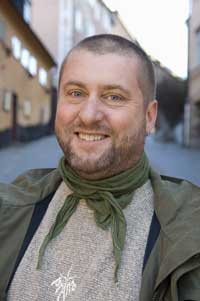
Image courtesy of Per Kornhall
Per Kornhall is no stranger to science. Having received both a PhD in botany and a Swedish teachers’ diploma, and having worked as a science teacher on and off for the past ten years (full-time for the last four), he knows exactly what he does and does not want students to be taught in science lessons – and how to get his 16- to 19-year-old students excited about scientific research. But how did someone like Per decide to enter the world of science teaching?
“I have always been amazed by science and how the scientific method gives us answers to questions we could never have tackled otherwise. It challenges the way we look at things. I think what made me want to become a teacher is a combination of my upbringing, and a very inspiring grandfather. My grandparents had their house designed for the purpose of teaching us kids, with a living room full of tools and a very long workbench. My grandfather told us everything he knew about science, from the Universe to Latin names of flowers, and explained how different machines worked, anything from small mechanical items to gearboxes,” recalls Per. “And I also had some very good teachers, especially at secondary school.”
Per is head of biology at the Westerlundska gymnasietw1, a secondary school in Enköping, Sweden. As a biology teacher, Per has a lot of freedom to structure his teaching as it suits him and his students, which is why he loves teaching in Sweden. This freedom allows him to collaborate with other teachers on interdisciplinary projects and to dig deeper into the subjects that his class are interested in.
But shouldn’t the government have a say in what students should learn? “The government is, of course, interested in having some control, but I don’t think this is a big problem,” says Per. “Teachers like myself know that freedom in teaching comes with a great responsibility. We need to teach what is needed for higher education, and the more freedom we have to teach content in our own way, the more inspired we become.”
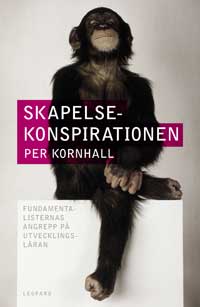
Image courtesy of Per Kornhall
Yet even for Per, too much of this freedom can be a curse, especially when it comes to teaching the origin of the diversity of life. For 17 years, he was a member of the Christian fundamentalist free church Livets Ord (The Word of Life) in Uppsala, and also taught biology at their school for four years. Some ten years ago, however, he started to have doubts about this church, which some people believe to be a sect. After a lot of thought, Per resigned from both the school and the church, went on to work at a communal school, and voiced his criticism – of both creationism and the Swedish school system that allows creationism to be taught in biology lessons – in a book, Skapelsekonspirationen (Creation conspiracy)w2, that was published in April 2008.
Per’s main criticism is of intelligent design (ID), a creationist theory that seems to be gaining ground in Christian schools in Sweden (for an article about the threat of creationism, read Jones, 2008). In Per’s opinion, the danger lies in the fact that this is not harmless or naïve belief, but a well-organised campaign to establish a society based on fundamentalist beliefs. Since the proponents of ID have not been successful in disseminating their views through the standard scientific means of peer-reviewed publications, they now try to get directly to media, politicians and schools. “As a teacher, I keep encountering Christian and also Muslim students who have serious doubts about evolutionary theory.” In his opinion, religious schools should be forbidden if they teach anything but scientifically based facts about the origins of the diversity of life in biology lessons.
But what if a student raises the issue of creationism in a science lesson – would Per address the question? Yes, he says, but cautiously – and only once the subject of evolution has been thoroughly taught; the focus of biology lessons is, after all, to teach biology. “The teacher would need to be aware that the student might be prepared with arguments that he or she has picked up either in a fundamentalist church or via the Internet. To be able to answer the student, the teacher would need to know some of the more common arguments and how they have been refuted (often a long time ago).”
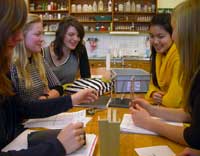
Per also cautions that some students may have been trained by missionary youth organisations to introduce debates about evolution. If a debate arises, Per stresses that while creationism can be debated, evolution is not open to debate. “Evolution is accepted by the scientific community because of overwhelming evidence. A classroom debate about evolution versus creationism would raise creationism to the same rank as evolution. There is no scientific debate between these two different ways of viewing life and acquiring information.”
What about the teacher’s religious beliefs? Does Per feel there is a place for more moderate religious teachers in the science classroom? “Absolutely”, he replies. Religious beliefs need not be a hindrance either in the science classroom or in evolutionary research. “The problem between faith and science arises with fundamentalist beliefs – where statements of faith are used as science or in a scientific context. I recently gave a seminar together with a priest from the Swedish Lutheran Church, and we had exactly the same view on the subject – that religious texts and beliefs cannot be used in biology, physics or chemistry. We also both saw creationism as a problem for the church and for society.”
Swedish ‘free schools’
Until 1991, Sweden had only about 90 ‘free schools’, besides the traditional communal primary and secondary schools. In 1992, the education system was liberalised, and since then, foundations, societies and private people can also found schools. If they do not ask for tuition fees, are open to everyone and largely comply with national curricula, they are generally acknowledged by the state and receive money from the communal government for each of their students. Many of the now almost 900 ‘free schools’ distinguish themselves by alternative educational concepts, specialising in certain subjects or offering free laptops to all students. Critics are worried, though, that among these are more than 60 religious free schools, funded by Christian or Muslim societies.
The science curriculum seems to be a tricky issue, not only when it comes to teaching evolution. Per tells us about two proposed reforms that have been stopped by the current government: “One was good, and the other was very bad.” In Sweden, students who want to go on to university must decide at the age of 16 between a career in science or in humanities. Those who choose humanities must also take two basic science courses. The first tackles energy, environmental issues and the scientific method. The second, longer course consists mainly of human physiology and biology, but also covers aspects of chemistry and physics. Those who choose a career in science must take courses in physics, chemistry and biology, with physics traditionally taking up a larger part of the courses than biology. Science teachers typically teach their science speciality (e.g. biology) to the science students, and all sciences to the non-science students.
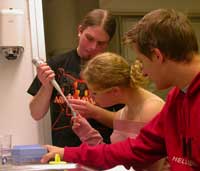
“The first proposal was to lengthen the biology courses for the science students, meaning more time could be devoted to human physiology and genetics – and we need to spend more time on that. That was a good thing,” Per explains. “The bad thing was that for nearly all non-science students, on the other hand, the second science course would be cancelled. That would mean that future politicians, journalists and other otherwise well-educated people would have no training in physics, chemistry or human physiology in upper secondary school. And that, I think, is a dangerous route to take in our modern society.”
Per continues: “It is important that science forms part of society’s common knowledge and that our future politicians and bureaucrats have a basic understanding of the complexity and depth of science. How will science be funded if nobody knows what scientists do? Secondly, although not everybody will get involved in scientific research, it can be understood and appreciated by a much wider public. Therefore it is important that we communicate science to everybody, and the best place to do that is in our schools.”
One way to interest students in science is to introduce them to the ethical considerations involved. To that end, Per works together with the Nordic Committee on Bioethicsw3, helping to find education resources on bioethics that are suitable to be translated into all the Nordic languages. As though that wasn’t enough, he also collaborates with the Swedish Centre for School Biology and Biotechnologyw4.The obvious problem with the Swedish system, though, is that the students who have opted not to study science are therefore less motivated in science lessons. Per doesn’t think this is really an issue with biology, since students are naturally interested in how their bodies work. But when it comes to physics and chemistry, it’s a different story: they find it boring and a repetition of what they learned earlier in school. Although most of Per’s students enjoy science, he feels that those who seem disinterested are just struggling with the burden of too many other subjects: “They simply do not have any energy left – no mental space to get fascinated.”
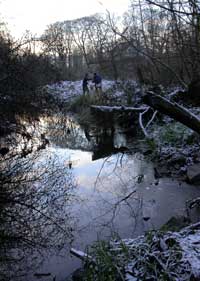
Image courtesy of Per Kornhall
Per feels there is no point in teaching topics that students don’t care about. “The students will learn it, they will write down (mainly) correct answers in their test, and then they will forget about it,” explains Per. “But if you can get a student interested in your subject, you can change his or her whole life and future career.” Does this mean teaching students only what is relevant to them? “I don’t mean that we necessarily have to relate to everyday things,” says Per. “The relevance for the student can be purely philosophical, but we need to catch their interest, in order for them to really learn something. This usually gets them motivated and wanting to know more. It is important for our students to realise that science is not static, a mere collection of facts, but a practical, hands-on, experimental endeavour that is constantly progressing. I think we are sometimes stuck teaching 19th-century content when we ought to upgrade to teaching current 21st-century science to our students.”
Per is forever getting involved in science projects that allow him to enthuse his students, but it is the project that won the European Physical Society’s prize at the Science on Stage 2w5 teaching festival in Grenoble, France, that makes him really proud. He is intrigued by the fact that he, as a biology teacher, won a European prize for teaching physics. But maybe, being a biologist was actually an advantage: “It is sometimes also good to approach a subject from a different angle to see things more clearly,” says Per. His idea was a simple one, and had probably been done before, but it was significant for Per, his students and those involved in science education in Sweden. It was a very successful attempt to overcome the disinterest of the non-science students in physics, by teaching them 21st-century science in a way they could relate to it.
The project, called ‘Waves’w6, involved teaching extremely complicated physics. “I told the students about molecular orbitals, relativity, stereochemistry, the Big Bang and quantum theory, to mention just a few,” says Per. So why did he not want to tackle the basics? “Because this is the stuff that is interesting,” explains Per. “Students have read about these subjects in newspapers and my goal wasn’t to make them understand everything, but to give them a glimpse of the fascinating world of modern science. When they understand that equations such as E=mc2 are not so complicated to understand, they gain self-confidence.” Some students went home to their parents and friends, and told them that they knew exactly what Einstein meant when he came up with his famous equation.
The lessons were a mixture of theoretical and practical demonstrations using PowerPointw7 presentations, incorporating images, videos and web links to illustrate the complex science.
It wasn’t long before Per reaped the rewards. Prior to the project, the attendance for his class had been rather low. But it rose as students became more interested in science. “Their respect for scientists and science grew,” says Per. “They found that science is not a boring subject, studied by boring people; it is a complicated and mind-blowing experience to carry out scientific research and it is done by people who know interesting stuff. And science influences students’ daily lives.”
Students were asked to sit for a test to get a good grade on the Waves project (attendance and participation in the practical parts were enough to pass this part of the course) and all but four of 28 students turned up. Per included an evaluation to find out what the students thought. Two comments are given below:
“This project has made me understand things that I did not think it was possible for me to understand.”
“I never really liked these subjects, but I am getting more and more interested. Partly because there are so many answers to some questions, partly because there are no answers to even more questions.”
There are many benefits to such projects, but one of the best parts is how much fun the teacher has. “It is more fun to teach these topics,” says Per. “It is very rewarding to see the faces of young men and women, when for example they suddenly understand that time-dilation calculations are real and can be used for practical purposes. Seeing their faces as science fiction turns into science reality is pure enjoyment for any teacher.”
Finally, if Per had to offer all science teachers one piece of advice, what would it be? “Be happy – teach things that fascinate you.”
References
- Jones S (2008) Interview with Steve Jones: the threat of creationism. Science in School 9: 9-17.
- Kornhall P (2008) Skapelsekonspirationen. Stockholm, Sweden: Leopard Förlag
Web References
- w1 – The Westerlundska gymnasiet’s website: www.westerlundska.nu
- w2 – Find out more about Per’s book, Skapelsekonspirationen, on his website (English and Swedish): http://perkornhall.se
- visit the website of publisher Leopard Förlag: www.leopardforlag.se/Article/View/?articleId=124
- w3 – For more information about the Nordic Committee on Bioethics, see: www.ncbio.org
- w4 – Organised by the Swedish Ministry of Education, the Swedish Centre for School Biology and Biotechnology aims to support and inspire teachers at all school levels. For more information (in Swedish), see: www.bioresurs.uu.se
- w5 – For more information about both the international and national Science on Stage activities, including teaching materials, see: www.science-on-stage.net
- w6 – For information on Per’s prize-winning ‘Waves’ project, see: http://perkornhall.se/science/index-waves.htm
- w7 – For useful links, and examples of the PowerPoint presentations, see Per’s website: www.perkornhall.se/science
Resources
- For an interview with Lewis Wolpert about belief, science education and much more, see:
- Leigh V (2007) Interview with Lewis Wolpert. Science in School 7: 9-11.
- Unsure about E=mc2? Why not learn about how it is applied in the world’s largest particle accelerator, the LHC:
- Landua R, Rau M (2008) The LHC: a step closer to the Big Bang. Science in School 10: 26-33.





